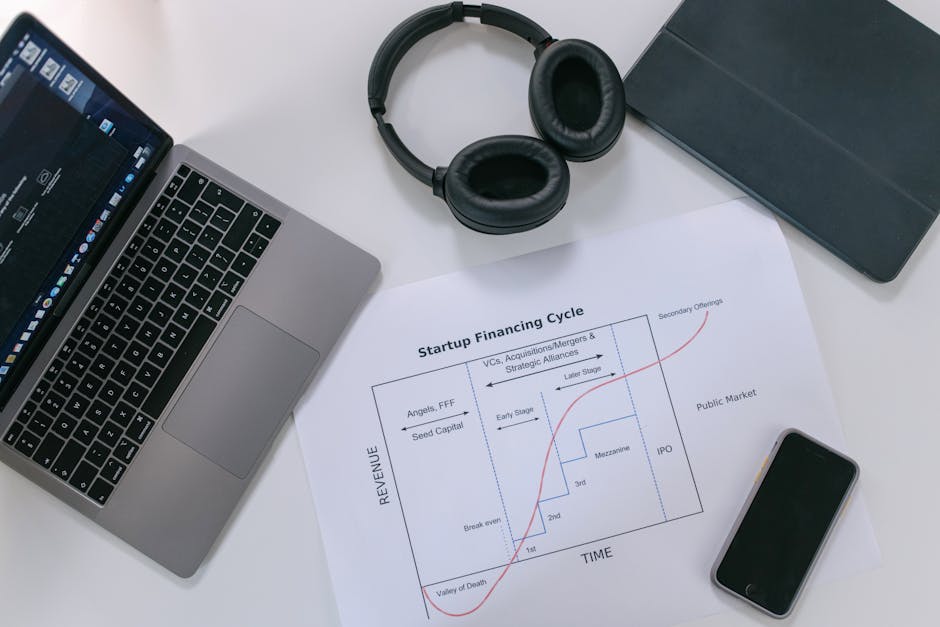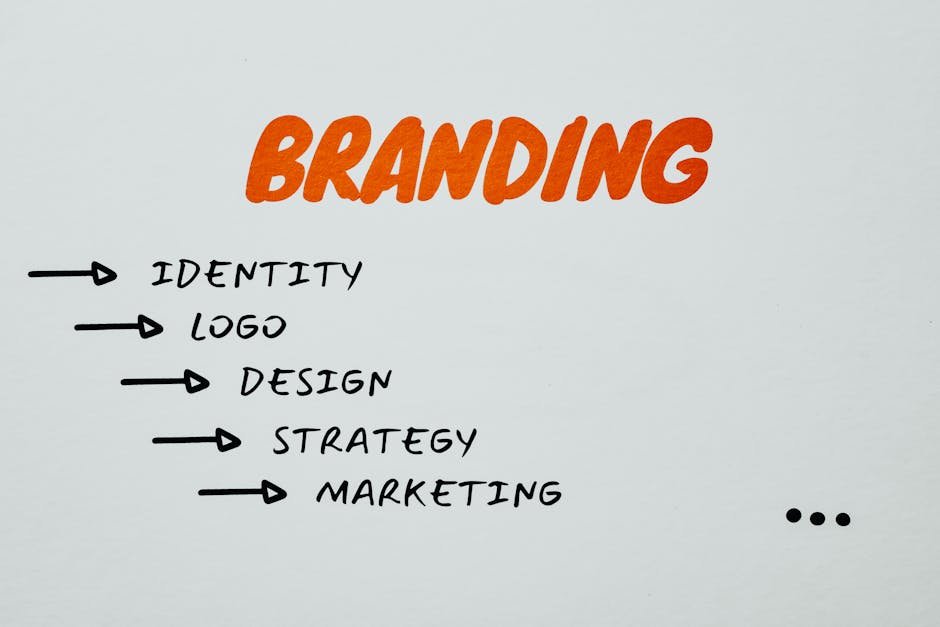15 Tailored Launch Strategies for Tech Start-ups
Looking to catapult your tech start-up to success? Discover 15 tailored launch strategies designed to ignite innovation and drive growth.
From customer research and validation to continuous product iteration, these proven tactics will guide you towards a successful launch.
Ready to revolutionise your start-up’s launch approach? Let’s dive in and uncover the strategies that will set your tech start-up apart in the competitive market.
Key Takeaways
- Conduct comprehensive market research and validation to understand target market needs and preferences.
- Prioritise essential features for your Minimum Viable Product (MVP) based on user feedback and market dynamics.
- Craft a compelling brand narrative and establish a clear brand identity to differentiate your start-up from competitors.
- Implement scalable infrastructure and leverage user engagement and feedback to drive continuous improvement and innovation.
Customer Research and Validation

In validating your tech start-up idea, conduct thorough customer research to understand their needs and preferences. Start by designing a comprehensive customer survey to gather insights into what your target market truly desires. Use this data to inform your market research, ensuring that you’re meeting unmet needs and offering a unique value proposition.
By delving deep into customer preferences, you can tailor your product or service to aline with market demands, setting yourself apart from the competition.
Through market research, you can identify trends, gaps, and opportunities within your industry. This will help you pinpoint the specific pain points your potential customers are experiencing, allowing you to tailor your offering to directly address these issues. By analysing market dynamics, you can position your tech start-up as a solution provider and demonstrate a clear understanding of the prevailing needs in the market.
Product-Market Fit Analysis

To achieve success in your tech start-up, you need to ensure that your product resonates with the market and meets the specific needs of your target customers. Conducting thorough market analysis and customer segmentation is crucial for identifying the pain points and desires of your potential users.
Understanding the competitive landscape and market positioning will provide valuable insights into how your product can stand out and offer unique value in the market. Here are some key considerations for conducting a product-market fit analysis:
-
Identify Target Customer Segments: Delve deep into the demographics, behaviours, and preferences of your potential customers to tailor your product to their specific needs.
-
Evaluate Competitive Positioning: Analyse your competitors to identify gaps in the market and to position your product as a compelling and differentiated solution.
-
Validate Market Need: Gather feedback from potential customers and iterate on your product to ensure it fulfils a genuine need in the market.
-
Refine Value Proposition: Continuously refine and communicate your value proposition based on market feedback and evolving customer needs.
MVP Feature Prioritisation

Prioritise essential features for your MVP to streamline development and address core user needs effectively. Feature prioritisation techniques are crucial for MVP development. By focussing on the most essential functionalities, you can launch your product quickly and gather valuable user feedback for agile iteration. Incorporating user feedback into the development process is essential for refining your MVP and ensuring that it alines with user needs.
To help you prioritise features effectively, consider using the following techniques:
| Technique | Description |
|---|---|
| MoSCoW Method | Prioritises features as Must have, Should have, Could have, Won’t have. |
| Kano Model | Categorises features as Basic, Performance, and Excitement factors. |
| Value vs. Complexity | Evaluates features based on their perceived value and development cost. |
| RICE Scoring | Ranks features by Reach, Impact, Confidence, and Effort. |
| Story Mapping | Visualises user activities and organises features into user-centric flow. |
User Experience Testing

When conducting user experience testing, focus on gathering actionable insights to enhance your product’s useability and appeal. Useability testing allows you to identify areas for improvement by observing how users interact with your product and collecting valuable user feedback. To ensure a successful user experience testing phase, consider the following:
- Engage users in iterative design processes to foster a sense of co-creation, making them feel valued and invested in the product’s evolution.
- Create an environment that encourages open and honest user feedback, fostering a sense of collaboration and trust between your team and the users.
- Prioritise user interaction by implementing features that facilitate seamless and intuitive user experiences, evoking excitement and satisfaction.
- Leverage user data and insights to drive continuous improvement, instilling confidence in the product’s ability to meet evolving user needs.
Agile Development Methodology

Implementing agile development methodology fosters adaptability, collaboration, and continuous improvement within your tech start-up’s product development process. Agile project management emphasises iterative and incremental development, allowing you to respond to changes quickly and deliver high-quality products. By breaking down the development process into smaller, manageable segments, you can prioritise features, gather feedback, and make necessary adjustments, enhancing the overall efficiency of your start-up’s operations.
Development sprint planning plays a crucial role in agile methodology, enabling your team to set short-term goals and allocate resources effectively. This approach encourages transparency and accountability, as it promotes regular checkpoints and demonstrations of progress. As a result, your start-up can swiftly identify and address any issues that may arise during the development process, ensuring that your product alines with market demands and customer needs.
Iterative Prototyping Process

Let’s talk about the iterative prototyping process.
The iterative prototyping process involves a rapid feedback loop and a continuous improvement cycle.
This approach allows for quick adjustments based on user input and market demands.
Rapid Feedback Loop
To achieve rapid feedback loop in your tech start-up’s iterative prototyping process, focus on continuous user engagement and fast iteration cycles.
Engage with your users frequently to gather real-time feedback and insights. Encourage open communication and create a feedback-friendly environment to foster collaboration.
Embrace a culture of experimentation and iteration to drive innovation and continuous improvement. Leverage rapid iteration to quickly test and validate ideas, allowing for swift adjustments based on user feedback.
Stay agile and adaptable to respond to changing market demands and user preferences. By embracing a rapid feedback loop, you can accelerate the development of your product and ensure that it resonates with your target audience.
Now, let’s delve into the subsequent section about the ‘continuous improvement cycle’.
Continuous Improvement Cycle
Incorporate user feedback into your tech start-up’s continuous improvement cycle to refine and enhance the iterative prototyping process.
Iterative development is crucial for staying ahead in the fast-paced tech industry.
By continuously experimenting with new features and functionalities based on user feedback, you can ensure that your product evolves in line with market demands.
This approach allows you to identify and address any potential issues early on, leading to a more streamlined and user-friendly final product.
Embracing continuous improvement also fosters a culture of innovation within your start-up, encouraging your team to constantly seek out new and better solutions.
As you strive for excellence in your product, this iterative process will ultimately contribute to the success of your tech start-up.
Transitioning into the subsequent section about ‘minimum viable branding’, it’s essential to consider how your brand evolves alongside your product.
Minimum Viable Branding

When launching your tech start-up, start with a minimum viable branding approach to establish a clear and focussed brand identity. In the fast-paced world of tech, a strong branding strategy is crucial for effective market positioning.
To evoke emotion and resonate with your audience, consider the following:
-
Authentic Storytelling: Craft a compelling narrative that reflects your brand’s mission and values, connecting with your audience on a deeper level.
-
Sleek Visual Identity: Utilise modern and eye-catching design elements to create a memorable and visually appealing brand image.
-
Voice of Innovation: Communicate with a tone that reflects forward-thinking and progressive ideas, showcasing your commitment to innovation.
-
Community Engagement: Foster a sense of belonging and involvement by actively engaging with your audience and building a community around your brand.
Lean Start-up Principles

Implement Lean Start-up principles to streamline your tech start-up’s development process and maximise efficiency in achieving market fit. By embracing lean start-up implementation and agile development, you can rapidly iterate on your product or service, allowing for quick adjustments based on customer feedback. This approach minimises the risk of building a final product that doesn’t meet market needs.
Customer validation is at the core of lean start-up principles, emphasising the importance of obtaining feedback from potential users early and often. This iterative process not only saves time and resources but also increases the likelihood of achieving product market fit.
Incorporating lean start-up principles into your tech start-up’s strategy fosters a culture of continuous improvement and innovation. It encourages a shift from traditional, rigid planning to a more flexible and adaptive approach that alines with the dynamic nature of the tech industry. By prioritising speed, learning, and iteration, you can effectively navigate the uncertainties associated with launching a new product or service.
Ultimately, the focus on achieving product market fit through customer-centric practises positions your start-up for long-term success in the fast-paced tech market.
Scalable Infrastructure Planning

Maximise your tech start-up’s potential for growth by strategizing scalable infrastructure planning that alines with lean start-up principles and agile development. Scalable growth is a key factor in ensuring your tech start-up can handle increasing demand and remain competitive in the market. To achieve this, consider the following:
-
Automated Scaling: Implement automated processes that can dynamically adjust resources based on demand, ensuring seamless scalability and efficient resource allocation.
-
Microservices Architecture: Embrace a microservices approach to build and deploy independent, scalable services, allowing for flexibility and rapid development.
-
Cloud Infrastructure: Leverage cloud-based infrastructure to easily scale resources up or down based on demand, reducing upfront investment and enabling rapid growth.
-
Continuous Monitoring: Implement robust monitoring and analytics tools to gain insights into system performance, proactively identify bottlenecks, and optimise scalability.
By prioritising infrastructure scalability planning, you can set the stage for sustainable growth and innovation.
Transitioning into the subsequent section about ‘go-to-market strategy’, it’s essential to aline your scalable infrastructure planning with a targeted and effective go-to-market approach.
Go-to-Market Strategy

To effectively launch your tech start-up, aline your scalable infrastructure planning with a targeted and effective go-to-market strategy. Market penetration is crucial, and to achieve this, a comprehensive competitive analysis is essential. Conducting a thorough competitive analysis allows you to identify your unique selling points and understand how to position your product in the market.
A successful go-to-market strategy involves understanding your target audience and how to reach them effectively. Utilise market research to identify the most lucrative segments and tailor your approach to address their specific needs. By doing so, you can optimise your market penetration and gain a competitive edge.
Furthermore, it’s imperative to develop a compelling value proposition that sets you apart from competitors. Highlighting the benefits and advantages of your product or service in a way that resonates with your target market can significantly impact your market penetration.
Early Adopter Engagement

When you’re launching a tech start-up, engaging early adopters can be instrumental in gaining initial traction and valuable feedback. To effectively engage with the early adopter community and maximise customer engagement strategies, consider the following:
-
Create Exclusivity: Offer early adopters unique access to your product or service, making them feel like valued insiders. This sense of exclusivity can evoke excitement and a feeling of being part of something special.
-
Open Communication Channels: Actively seek feedback and input from early adopters. Demonstrating a willingness to listen and adapt based on their insights can foster a sense of collaboration and partnership.
-
Deliver Personalised Experiences: Tailor your interactions and offerings to the specific needs and preferences of early adopters. This personalised approach can generate a strong emotional connexion and a sense of being understood.
-
Foster Community Engagement: Encourage early adopters to connect with each other, fostering a sense of belonging and shared purpose. Building a robust community around your product or service can create a powerful emotional bond and drive enthusiasm.
User Feedback Incorporation

You should prioritise iterative product improvement, ensuring that your tech start-up’s offerings constantly evolve based on user feedback.
By developing features that are customer-centric, you can create a product that resonates with your target audience.
It’s crucial to integrate a feedback loop into your processes, allowing you to gather insights and make informed decisions.
Iterative Product Improvement
Throughout the development process, continually incorporating user feedback into your product is crucial for creating a successful tech start-up launch strategy. Embracing a dynamic product iteration and improvement cycle fosters innovation and ensures that your offering remains relevant in a rapidly evolving market.
Here are four key reasons why embracing iterative product improvement is essential for your tech start-up’s success:
-
Customer-Centric Approach: By actively seeking and implementing user feedback, you demonstrate a commitment to meeting customer needs and preferences.
-
Agility and Adaptability: Rapidly iterating based on user input allows your product to quickly adapt to changing market dynamics and emerging trends.
-
Competitive Edge: Continuous improvement enables you to stay ahead of the competition by consistently delivering enhanced value to your users.
-
Enhanced User Experience: Regularly integrating user feedback results in a product that’s intuitive, user-friendly, and tailored to customer preferences.
Customer-Centric Feature Development
Incorporate user feedback into your product development to ensure a customer-centric approach for tailored launch strategies in tech start-ups. Customer engagement is crucial for gathering valuable insights that can drive feature prioritisation. Actively seek feedback through surveys, user testing, and direct communication channels to understand the needs and pain points of your target audience.
Leverage this information to prioritise feature development based on the most pressing customer requirements, ensuring that your product resonates with its intended users. By integrating user feedback into your development process, you demonstrate a commitment to meeting customer needs and fostering a loyal user base.
This customer-centric approach not only enhances the value proposition of your product but also increases the likelihood of a successful and well-received launch.
Feedback Loop Integration
Integrating user feedback into your product development process is essential for creating customer-centric launch strategies for tech start-ups. Real time analytics allows you to gather immediate insights into user behaviour, enabling you to make informed decisions.
Customer engagement should be a top priority, fostering a loyal user base and generating valuable feedback. By leveraging user feedback, you can prioritise features that truly resonate with your audience, resulting in a more compelling product.
Embracing a feedback loop culture within your start-up creates a sense of transparency and trust with your users, fostering a supportive community. Actively listening to your users not only enhances your product but also cultivates a sense of ownership amongst your customers. This approach is crucial for start-ups looking to innovate and stay ahead of the curve.
Moving into the subsequent section about ‘performance metrics tracking’,…
Performance Metrics Tracking

When launching your tech start-up, it’s crucial to track performance metrics using a comprehensive and data-driven approach. Data analytics plays a pivotal role in understanding how your product is being utilised by your customers. By leveraging data analytics, you can gain valuable insights into user behaviour, engagement levels, and feature adoption. This information is essential for making informed decisions that drive performance optimisation and overall business success.
In the fast-paced world of tech start-ups, keeping a close eye on key performance metrics is vital. It allows you to identify areas that require improvement and areas where your product is excelling. By tracking metrics such as customer acquisition cost, churn rate, and customer lifetime value, you can make strategic adjustments to your marketing, sales, and product development efforts. These insights enable you to allocate resources more effectively and ensure that your start-up is on the path to sustainable growth.
Embracing a data-driven approach to performance metrics tracking empowers you to iterate and innovate with confidence, knowing that your decisions are backed by solid evidence. The integration of performance metrics tracking into your start-up’s strategy isn’t just a best practise; it’s a fundamental necessity in today’s competitive tech landscape.
Conversion Rate Optimisation

When optimising your conversion rate, A/B testing allows you to compare different versions of your website or app to see which one performs better.
By incorporating user-centric design principles, you can create a seamless and intuitive experience that encourages visitors to take action.
Making data-driven decisions based on the insights gathered from user behaviour and interactions can significantly boost your conversion rates.
A/B Testing for CRO
To optimise your conversion rates, start A/B testing your website or app. A/B testing allows you to experiment with different versions of your website or app to see which one yields better results. Here are four reasons why A/B testing is crucial for CRO:
- Gain valuable insights into user behaviour and preferences.
- Identify the most effective design, copy, and call-to-action elements.
- Continuously improve user experience and increase customer satisfaction.
- Make data-driven decisions to boost conversion rates and overall performance.
User-Centric Design Principles
As you delve into user-centric design principles for conversion rate optimisation, you can leverage the insights gained from A/B testing to tailor your digital presence to the preferences and behaviours of your target audience.
User feedback becomes a crucial component in this process, allowing you to understand the needs and pain points of your users. Design thinking plays a pivotal role here, enabling you to create intuitive and seamless user experiences that drive conversions.
By incorporating user feedback and employing design thinking methodologies, you can iterate on your digital assets to enhance useability and engagement. This approach fosters a user-centric culture within your start-up, demonstrating your commitment to meeting the evolving needs of your audience.
Embracing user-centric design principles not only optimises conversion rates but also fosters long-term customer loyalty and satisfaction.
Data-Driven Decision Making
Utilise data-driven decision making to optimise your conversion rates and drive business growth. Leverage predictive analytics and data analysis to uncover valuable insights that lead to performance optimisation.
Here’s what you need to consider:
- Uncover hidden patterns and trends within your user data that can revolutionise your approach.
- Gain a competitive edge by leveraging data to anticipate user behaviour and tailor your strategies accordingly.
- Enhance user experiences through targeted improvements based on data-driven insights.
- Maximise your marketing efforts by identifying the most effective channels and messaging through data analysis.
These strategies will empower you to make informed decisions that directly impact your conversion rates and overall business success.
Transitioning into ‘continuous product iteration’, you can further refine your approach based on real-time user feedback and market trends.
Continuous Product Iteration

Craft your product through continuous iteration to meet the evolving needs of your target market and maintain a competitive edge in the tech start-up landscape. Embracing an iterative development process allows you to refine your product based on continuous user feedback, ensuring that it remains alined with market demands. By actively seeking and incorporating customer input, you can enhance the user experience, which is crucial for customer satisfaction and retention.
Continuous product iteration is a dynamic approach that enables you to adapt to changing market dynamics swiftly. It fosters innovation and agility, positioning your start-up as a responsive player in the industry. This iterative development process empowers you to make incremental improvements, address any issues promptly, and stay ahead of the competition.
Moreover, by integrating customer feedback into the product refinement process, you demonstrate a customer-centric approach, which can lead to increased customer satisfaction and loyalty. This, in turn, can contribute to positive word-of-mouth marketing and enhanced brand reputation. Therefore, embracing continuous product iteration not only keeps your offering relevant and competitive but also fosters strong customer relationships.
Frequently Asked Questions
What Are Some Common Challenges Faced by Tech Start-ups When It Comes to Establishing a Scalable Infrastructure?
When establishing infrastructure, tech start-ups often face scalability challenges. You must carefully plan for future growth, ensuring your systems can handle increased demands. It’s crucial to anticipate and address potential bottlenecks early on.
How Can Tech Start-ups Effectively Engage With Early Adopters to Gain Valuable Insights and Feedback?
To effectively engage with early adopters, leverage engaging influencers and create user feedback loops. This helps gain valuable insights and feedback, paving the way for innovative ideas and products that resonate with your target audience.
What Strategies Can Tech Start-ups Use to Track and Analyse Performance Metrics for Their Products?
To track and analyse performance metrics for your products, focus on user engagement and feedback collection. Utilise data analysis tools to gain valuable insights. This approach will help you make informed decisions and drive innovation.
How Can Tech Start-ups Optimise Conversion Rates for Their Products or Services?
Rev up your conversion optimisation by turbocharging user experience design. Sleek interfaces, intuitive navigation, and seamless interactions fuel higher engagement and sales. Craft an experience that drives users to convert effortlessly.
What Are Some Best Practises for Continuous Product Iteration in the Context of a Tech Start-up?
To achieve continuous improvement in a tech start-up, embrace Agile development to iterate on your product. Emphasise rapid feedback loops, customer collaboration, and flexibility to adapt to market changes. This approach fosters innovation and keeps your product competitive.
Conclusion
You’ve got the tools to tailor your tech start-up’s launch strategy like a skilled tailor crafting a bespoke suit.
By conducting thorough customer research, prioritising MVP features, and incorporating user feedback, you’ll ensure your product fits like a glove in the market.
With continuous iteration and optimisation, your start-up will be primed for success, like a finely-tuned race car ready to zoom past the competition.
Go forth and launch with confidence!
Contact us to discuss our services now!
